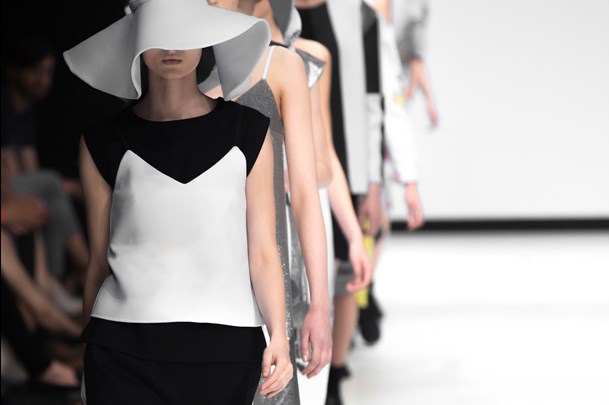In a Nutshell
When we think ‘fashion,’ we think Milan, Paris and The Devil Wears Prada. Excited to get to the cutting edge of this trillion-dollar industry, we spoke to chair of Fox William’s fashion law group, Stephen Sidkin. What we wanted to know was, well, everything. And we were secretly hoping we could snaffle a Marc Jacobs bag, too.
“Before I became a lawyer I worked in menswear. I used to say that I’m the only solicitor trained to measure a men’s suit,” smiles Sidkin. “I became interested in fashion law some years later, when was when I engaged in a data-mining exercise. I was analysing why a particular type of work was coming our way from a series of fashion clients when I had a lightbulb moment. I thought, if we’re doing this type of work for this type of client, could we not get more work from the same cohort of clients? It was quite the lightbulb, Fox Williams was the first firm to have a fashion law practice in the UK and “covers the spectrum of the industry from menswear, through to womenswear, childrenswear, athleisure, footwear and accessories,” says Sidkin.
If throwing together an application for a fashion-law outfit strikes your fancy, what should you know? “Two pieces of advice,” says Sidkin, “first, read the industry news and think about what is happening.” What Sidkin is referring to is not consumer fashion news such as those that appear in The Times on a Wednesday – “I flick through those” – instead you need to read “the range of daily online newsletters aimed at the industry. The second piece of advice,” continues Sidkin, is that “most of the work is commercial and IP law, and commercial law is dependent on contract law. Contract and IP law are black letter law. They are case heavy. You cannot not know those areas. You cannot not keep up to date.”

Realities of the Job
If you’re clinging on to thoughts of a glamorous reinvention, a la Anne Hathaway’s character in The Devil Wears Prada, then think again. Being a fashion lawyer means “researching discrete areas of the law and drafting agreements, emails and letters and visiting clients and their factories and warehouses – we actually get to see what’s going on.”
In terms of matters, Sidkin recently advised a client on whether price-competitive-claims made by one of their competitors are compliant with competition law. In another issue, an overseas logo owner has accused a UK fashion brand of misusing said logo. It may not scream ‘fashion,’ but if you’re interested in law then you’re interested in law, and both of those matters ooze with legal issues.
So what role do juniors play? “If I’m involved in it, you’re involved,” says Sidkin. A word of warning to our readers, though: not all supervisors will have Sidkin’s approach. At the partner level, “business development is part of my role,” Sidkin admits, “but it’s also a part of the role (on a smaller scale) of being a junior. It’s not something done only by partners at Fox Williams.” For juniors, there are opportunities to attend presentations, speak at events, write and contribute to Fashion Focus (the firm’s newsletter) and post on social media. “A number of junior lawyers have attracted instructions from new clients.” Reading between the lines, an entrepreneurial mindset wouldn’t go amiss.
Current Issues
October 2023
So, what are some of the big trends? What’s happening in the fashion world that our readers should know about? Much like the rest of the world, fashion is focused on sustainability and Sidkin thinks that “will push fashion law forward.” A big part of that is “the second-hand clothes market.” Or to use the more fashionable term, ‘the preloved clothes’ market. It’s a big deal, and so trendy right now Love Islanders have all been wearing pre-owned threads since 2022.
Additionally, as Sidkin judiciously points out, “fashion is a discretionary spend, so it’s subject to economic considerations so far as the UK is concerned.” In other words, when money is tight, people tend to cut down on unnecessary purchases. In this event, says Sidkin, “insolvency is another area to think about!”
In 2023, the rise of AI has had its impact on the fashion industry. Generative AI can be used for branding, marketing, designs and events to create virtual models. Fashion lawyers will have to consider the IP implications of such generated texts, designs and images as the law is still yet to fully address issues of ownership in the context of AI. However, McKinsey & Company predicts that generative AI could add at least $150 billion to the profits of the fashion industry across supply chains, merchandising and customer experience. Online chatbots and virtual try-ons are a few examples of the ways in which AI is settling into this sector.